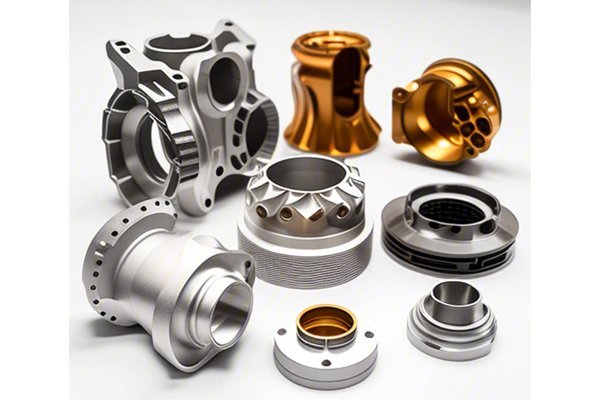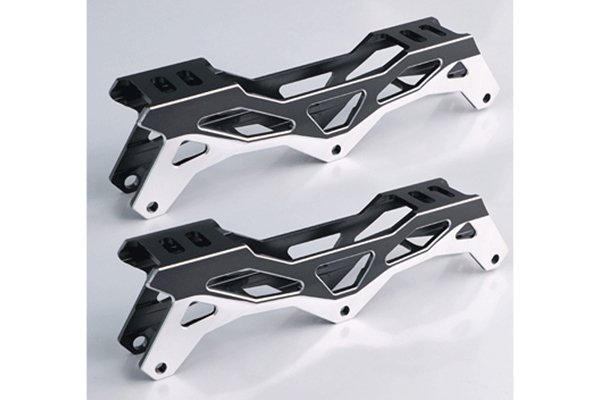Did you know that a staggering 20% of parts manufactured through CNC machining fail to meet original specifications? This significant statistic highlights the critical importance of ensuring that part contours meet rigorous requirements. In a world where precision engineering plays a pivotal role in industries ranging from aerospace to healthcare, the need for high-quality contours in CNC machining cannot be overstated. In this comprehensive guide, we will dive deep into methods, best practices, and innovative solutions to guarantee that the part contours meet requirements in CNC machining processes.
Understanding the Importance of Accurate Contours
Before we delve into the solutions, it’s essential to grasp why maintaining accurate part contours is of utmost importance. Part contours influence several aspects of a finished product, including:
Failing to achieve the required contour can lead to wasted materials, increased production costs, delayed timelines, and ultimately, dissatisfied customers. Therefore, ensuring that contours meet specified requirements is not merely an option but a necessity.
Key Factors Affecting Part Contour Accuracy
Understanding the factors that influence a part’s resultant contour is critical to achieving desired specifications. Here are several essential aspects:
Best Practices to Ensure Accurate Part Contours
With an understanding of the importance of contour maintenance and the factors affecting it, let’s explore a range of best practices that can be implemented to guarantee that the desired part contours are achieved.
A critical component for achieving accurate machining contours is the use of high-quality tooling. Invest in tools that are designed specifically for the materials being machined. Regularly inspect and replace tools that show signs of wear.
Periodic calibration of CNC machines is vital to ensure they operate within specified tolerances. A well-calibrated machine translates into improved accuracy of the contours of the finished products. Establish a routine preventive maintenance schedule.
Analyze the material properties and select suitable cutting parameters. Adjust feed rates, spindle speeds, and depths of cut according to the specific requirements of different materials. Using cutting fluid can also improve the cutting environment.
Computer-aided design (CAD) and computer-aided manufacturing (CAM) software can be invaluable for planning the machining process. Advanced software packages enable precise simulation and parameter adjustment before actual machining begins.
Performing test cuts is an effective way to evaluate contour accuracy without wasting significant material. Once the correct settings are identified, production can commence more confidently.
Managing the workshop environment can be a crucial factor in contour accuracy. Companies should maintain consistent temperature and humidity levels in the production area to minimize material shrinkage or expansion.

Regular inspections of both tools and finished parts allow for immediate detection of deviations from the desired contour. Implementing a feedback system can quickly inform operators of necessary adjustments.
Skilled operators are less likely to encounter problems related to contour accuracy. Provide comprehensive training programs focused on machine operation, programming, and maintenance. Involve your team in continuous improvement initiatives.
Understanding the acceptable tolerances for each component is key. Employ simulation techniques to visualize the machining process and analyze the expected contour before executing the final cut.
Challenges and Solutions in Maintaining Contour Accuracy
Although the best practices mentioned above can significantly improve contour accuracy, some challenges may still arise. Here are some common challenges and how to address them:
When dealing with complex shapes, the traditional CNC machining process can struggle. Utilizing multi-axis CNC machines allows for greater flexibility in part design and can help achieve more complex contours.
Certain materials, especially metals, can warp due to heat during machining. Implement stress-relief techniques before and after machining to help counteract any potential warping.
Machine vibrations can lead to inaccuracies in part contours. Invest in vibration control measures such as better machine mounts or damping materials, and ensure that the cutting tools are securely clamped.
Mistakes made during machine programming or operation can lead to contour inaccuracies. Strengthening the training program, providing machine operation checklists, and utilizing digital interfaces can help reduce human errors.
Sometimes, achieving the most precise contours can significantly raise production costs. Implementing a layered approach, weighing the critical nature of each component against cost, can lead to better decision-making.
Case Studies
In an aerospace manufacturing company, high precision is non-negotiable. After implementing regular machine calibrations and continuous employee training programs, the company reported a 25% reduction in component rejection rates due to contour inconsistencies.
A consumer electronics manufacturer dealing with plastic casing parts faced challenges with part contours. By switching to advanced CAD/CAM software, they managed to optimize the manufacturing process, which led to a stunning reduction in contours out of spec, enabling a faster time-to-market.
In a medical device manufacturing firm, they incorporated rigorous inspection processes and feedback loops into their production. This focus significantly improved their output quality, allowing them to maintain high standards required for regulatory approvals.
: The Path Forward
Ensuring that the part contour meets requirements in CNC machining processes is an essential aspect of modern manufacturing. Utilizing high-quality tools, ongoing machine calibration, appropriate cutting parameters, and comprehensive training and inspection processes can significantly enhance contour accuracy.
In conclusion, there is a multitude of strategies available to address the issue of contour accuracy. By understanding the factors at play and implementing best practices, companies can achieve superior quality in their machined parts, ultimately leading to increased customer satisfaction, reduced costs, and an enhanced reputation in the industry.
This blog emphasizes the importance of precision in CNC machining, particularly concerning contours. In a rapidly evolving technological landscape, taking the time to adopt these techniques can ensure that businesses remain competitive and maintain their commitment to excellence. Embrace these strategies today to ensure your machining processes stand the test of time.






